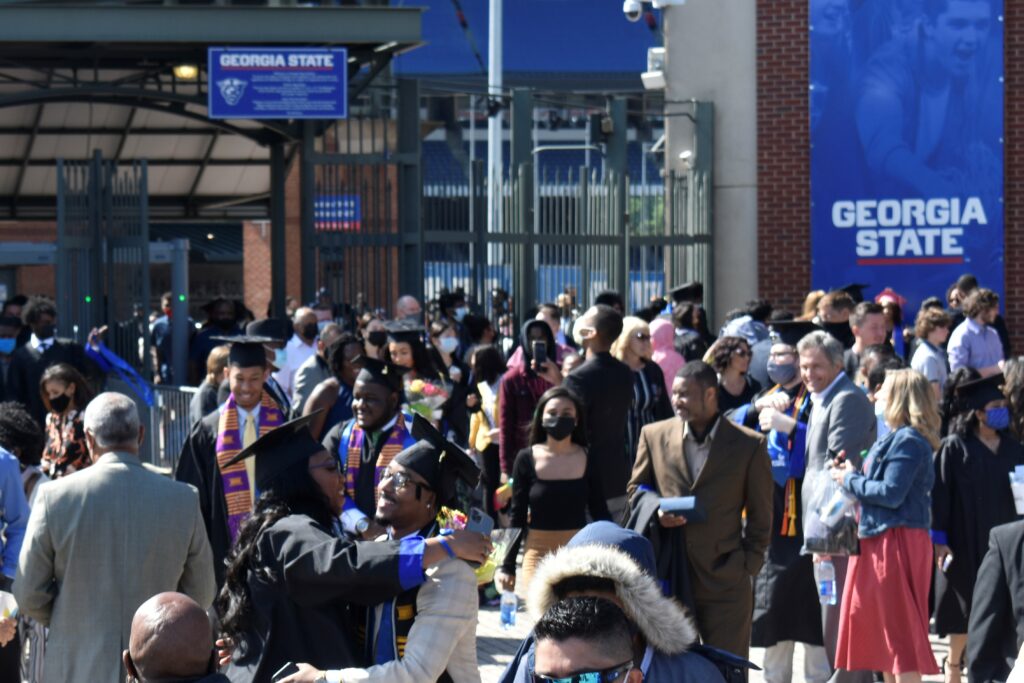The Saving on a Valuable Education (SAVE) plan provided lower monthly loan payments for borrowers and lessened the time it takes to pay off their debt. Photo by Spencer Platt/Getty Images
WASHINGTON — The U.S. Supreme Court this week refused to reinstate, for now, the Biden administration’s latest efforts to provide student debt relief to millions of borrowers, allowing a lower court’s injunction to stay in place while legal challenges unfold.
The Saving on a Valuable Education (SAVE) plan provided lower monthly loan payments for borrowers and lessened the time it takes to pay off student debt. The program came shortly after the Supreme Court struck down an earlier student loan forgiveness plan from the administration in June 2023 that would have canceled more than $400 billion in debt.
When it was unveiled in February, the SAVE plan was expected to provide $1.2 billion in debt forgiveness to almost 153,000 people, according to estimates from the U.S. Department of Education. It estimated that 2,680 Marylanders would have saved $22.7 million under the program.
But the SAVE plan was quickly met with a wave of legal challenges from a coalition of GOP-led states in two lawsuits stemming from Missouri and Kansas.
Arkansas, Florida, Georgia, North Dakota, Ohio and Oklahoma filed a federal lawsuit alongside Missouri in April against the administration over the plan.
The Supreme Court on Wednesday refused to lift an August ruling by the U.S. Court of Appeals for the 8th Circuit that temporarily halted the plan. The appellate decision followed a federal judge in Missouri issuing a preliminary injunction blocking the plan in late June.
In its decision, the nation’s highest court said it expects the 8th Circuit to “render its decision with appropriate dispatch.”
Missouri Attorney General Andrew Bailey praised the Supreme Court’s decision in a statement Wednesday, calling it a “huge win for every American who still believes in paying their own way.”
On the other hand, a spokesperson for the Education Department said “we are disappointed in this decision, particularly because lifting the injunction would have allowed for lower payments and other benefits for borrowers across the country,” per a statement shared with States Newsroom.
The spokesperson said the department “will work to minimize further harm and disruption to borrowers as we await a final decision from the Eighth Circuit,” adding that “the Biden-Harris Administration remains committed to supporting borrowers and will continue to fight for the most affordable repayment options for millions of people across the country.”
In a statement, Mike Pierce, executive director of the Student Borrower Protection Center, said “in rejecting this appeal, the Supreme Court perpetuates the 8th Circuit’s bogus legal fiction that pausing affordable payments is ‘preserving the status quo.’”
“This is ludicrous. Millions of people were repaying their student loans. Now they are in limbo,” Pierce added.
Meanwhile, Kansas, Alabama, Alaska, Idaho, Iowa, Louisiana, Montana, Nebraska, South Carolina, Texas and Utah also filed a lawsuit over the plan in March. A federal judge in Kansas dismissed eight of those states — allowing only Alaska, South Carolina and Texas to move forward with their challenge — and issued a preliminary injunction.
In late June, the U.S. Court of Appeals for the 10th Circuit allowed parts of the SAVE plan to go forward — forcing Alaska, South Carolina and Texas to file an emergency request to the Supreme Court to vacate the stay.
But the Supreme Court rejected this attempt from the states’ attorneys general on Wednesday, saying that “applicants represent that they do not require emergency relief from this Court as long as the Eighth Circuit’s injunction … is in place.”

